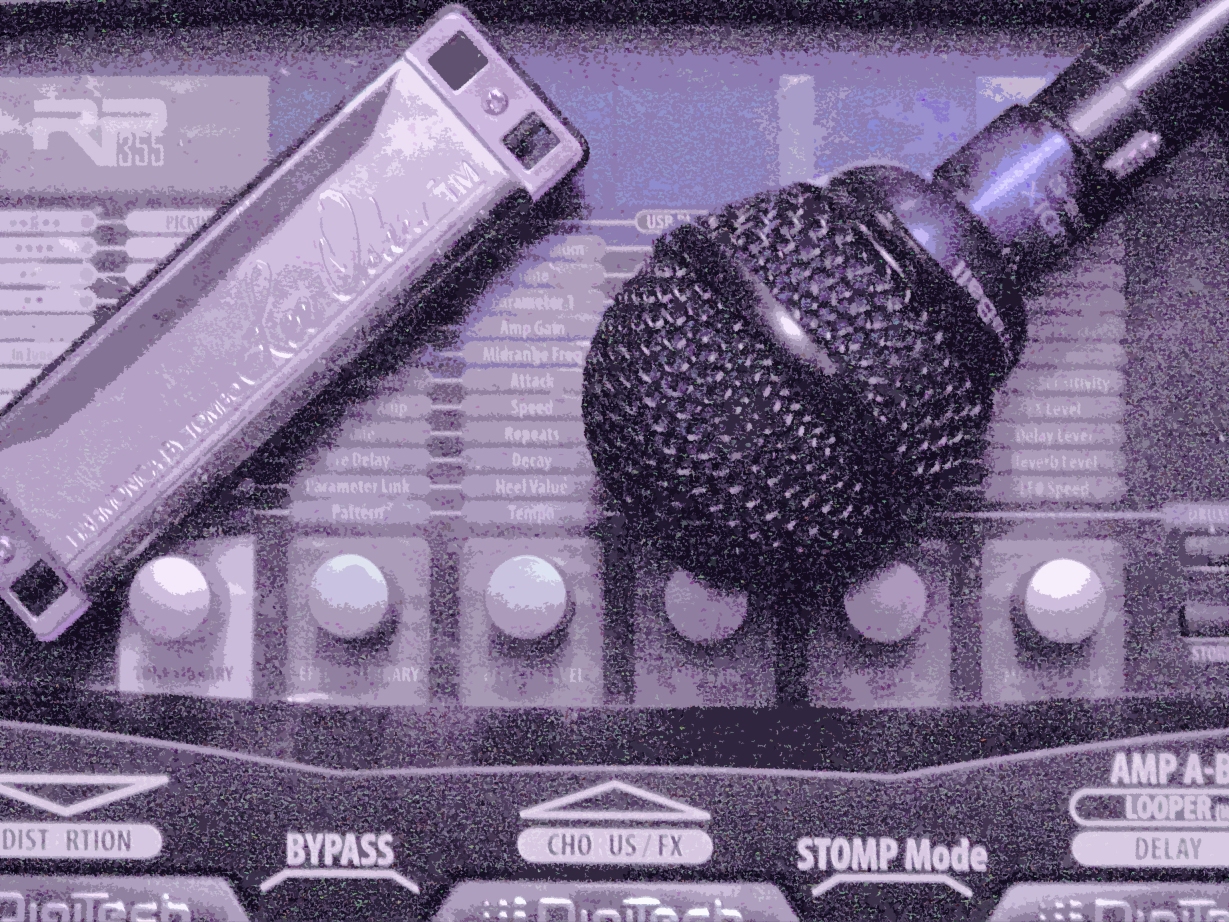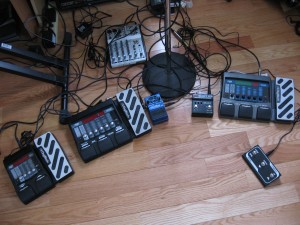
RP Tip #3: Sounding like an organ with 1, 2, or 3 RPs
You can get different kinds of organ sounds with one, two, or three RPs.
If you have one RP: use one of my patches with a rotating speaker effect, a phase shifter effect, or a univibe effect. Work the pedal to make the rotating speaker sound speed up and slow down. If you can, use both left and right outputs into a stereo PA–the spatial quality it gives to the rotating speaker effect is amazing.

If you have two RPs: Put the rotating speaker effect on one, and run the output from that RP to the input of the other. On the second RP, use my 8+16U patch, which gives you an octave up plus two octaves up, under footpedal control, with no amp modeling. This is a sound that cuts through a mix, especially the double octave up setting.
If you have three RPs: Put the rotating speaker effect on one, and run it in parallel with another running a low octave patch (i.e., send the outputs of both devices to a mixer to be mixed into one signal), like the FBD8D or FBA8DW patches. Take the mixed output and put it through the third RP, again running the 8+16U patch. This sound has a lot of octaves in it, and it’s big and very organ-like.
Here are a couple of clips of organ-style leads that I played using a three-RP setup. Both were improvised over the same 3 or 4 layer harp loop, played on a B Dorian Minor harp in second position (f# minor). The first is a very rock-organ sound; the second is a dreamy Lowry organ style lead that might have been played by Garth Hudson of The Band.
Excerpt 2: dreamy, Lowery organ type sound, like Garth Hudson of The Band
Related Posts
2 Comments
Leave a Reply
You must be logged in to post a comment.
WHAT’S NEW
Categories
- Audio/Video
- Blog
- Blue Future
- Digitech RP Tricks and Tips
- Discography, CDs, Projects, Info, Notes
- Featured Video
- For the Beginner
- Gallery
- Hunter's Effects
- Hunter's Music
- Huntersounds for Fender Mustang
- Meet the Pros
- More Video
- MPH: Maw/Preston/Hunter
- My Three Big Contributions
- Player's Resources
- Pro Tips & Techniques
- Recommended Artists & Recordings
- Recommended Gear
- Recorded Performances
- Reviews, Interviews, Testimonials
- The Lucky One
- Uncategorized
- Upcoming Performances
- Zoom G3 Tips and Tricks

Just curious, do you have any experience with the old DOD Tec4x processor pedals? I got one some time ago in a box of tubes, cables, parts, etc. and it has some of the same effects that the RPs have. I’ve only played with it just a bit but thought about combining it with an RP250 to try to get something like the organ sounds you have.
I have no experience with those devices. If it sounded good when it was made, and it’s still functioning, it probably sounds good now.
I’m trying lately to keep my stage rig to the fewest number of devices possible in order to avoid onstage complications, so the ONLY thing I take out now (not counting the looper) is the RP355. But at home it’s lots of fun to chain the boxes up and see what happens.